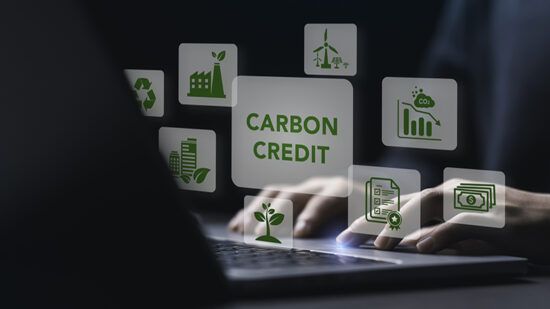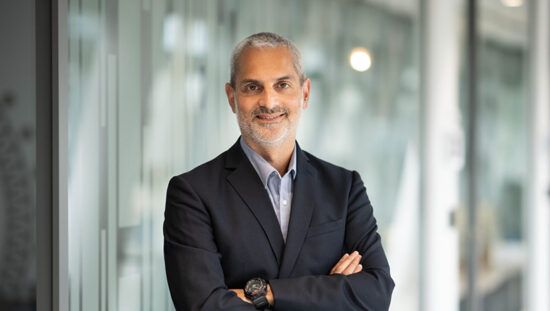In this two-part Green Dream video interview, Natalie Kenway, editor in chief at MA Financial, speaks to Alex Monk, portfolio manager in the global energy transition team at Schroders, about investing for a low-carbon future, avoiding fossil fuels and engagement.
Watch the full video interview above and read the transcript below.
NK: Hello and welcome to the Green Dream for ESG Clarity, I’m Natalie Kenway, and today I’m joined by Alex Monk, portfolio manager in the global energy transition team at Schroders. Thank you so much for coming into the studio today.
AM: Good to see you. My pleasure.
NK: We are here to talk about the energy transition. Why is it so important that we’re taking in some of the heaviest polluters that are in the energy sector along on this path to a low carbon future?
AM: I think the first thing to say here is that in order to get to net-zero emissions or a 1.5 aligned world, every aspect of our economy needs to transition. No sector is immune, almost every sector globally is an emitter. Now, obviously, our energy system is a big part of that. Depending on how you bucket up emissions, our energy system contributes anywhere between 40% and 60% of all emissions globally. Now, when we think about some of the sort of biggest emitters within the energy system, the fossil fuel companies are obviously in that camp. Now together their direct emissions are probably anywhere between 5% and 10% of all emissions globally. And when I talk about direct emissions that’s them actually extracting the energy out of the ground, some of the methane emissions that come out of that.
Clearly, they need to improve on that front too, but we also need to think about how they’re business models transition longer term in terms of the use of the products that they’re producing, which obviously are the bigger chunk of fossil fuel emissions globally. Now, what I would say is they can only go as fast as the demand side of the equation is going too. If you look at our world today, 30% of all vehicles sold in Europe last year were electric, but still the EV fleet is only 2%. We need to make sure we’re fixing the demand side so that their supply side can also change to.
NK: And how do you ensure that your capital, your investment, is directed towards sustainable activities like renewables?
So within the Global Energy Transition Fund, we are 0% fossil fuels and we really do mean zero. Even if companies have 1% of their revenues coming from fossil fuels, they’re not going to be invested in the fund. Within that strategy, we really are pure play trying to direct that capital towards companies that are driving change to the technologies and services they’re bringing to the table.
Again, we do run a conventional energy fund on the team as well, dealing with those companies that are transforming because we think there’s a really interesting investment opportunity there as well as these companies go through this transition and are still big, major energy companies in the future. But certainly within the core kind of global energy transition fund strategy, we are 0% fossil fuels.
NK: Okay. And the fund launched in 2019. Can you talk about some of the success stories in terms of engagement with those companies?
AM: Yeah, it’s a really good question. One of the things we’ve always said is that it’s not just about ‘what’ the company is doing, but ‘how’ a company is doing it. Now within our strategy. The ‘what’ is fairly clear in that we’re targeting companies that are driving change in the energy system, but we’ve also got to get the ‘how’ right to in terms of how these companies interact with their broader stakeholders, their employees, their customers and the broader environment.
A couple of areas that we’ve been really working on recently have been engagement across the solar supply chain around labour use and making sure that sort of procurement of critical minerals is correct and sustainable. We’ve been engaging with lots of companies both within China and outside of China, to really make sure they have the policies and practices in place so that we can be comfortable with the way they’re doing things, which again is really, really important, and particularly given how much solar material comes out of that part of the world, and also how important solar is going to be for our energy transition.
We’ve also been doing quite a lot of work on the governance side. Again, a lot of these companies are still relatively youthful companies that don’t necessarily always have the best-in-class practices, which are important for delivering shareholder returns long term. So making sure they have the right boards in place, the right kind of corporate structures to protect minority shareholders is really important too.
And then finally, on environmental side, lots of these companies are obviously producing things that are going to be critical for energy transition, but making sure that producing those things – batteries, wind turbines – in a sustainable way that’s right for the environment and not creating emissions in the production process is really, really important too. So constantly engaging across all these different areas.
And obviously the sort of Schroders engagement blueprint is really important in terms of guiding our engagement activities.
NK: Okay. Thank you for explaining that. And is there any other examples of where engagement hasn’t worked out where you’ve had to divest?
I think one of the things that’s really important with engagement is that there are consequences for companies that don’t necessarily make the changes that you would like to see as an investor. That’s really where you can credibly drive change if there is sort of a narrative that makes sense or stick at the end of it.
We’re always engaging with all sorts of companies and trying to get sort of milestones that we would like to see companies hit before it starts potentially impact the investment process. And one of the areas where we’ve engaging a lot and where we haven’t maybe seen the speed of change that we would like is in the auto sector.
Many, many companies in the auto sector are doing lots of very exciting things in terms of driving change. But potentially we would like to see them going maybe a little bit quicker or improving some of the specific goals that we’ve made of companies. That’s been one area where we have set milestones, and been patient and willing. It takes time for companies to drive change, so you’ve got to make sure you leave them enough time to do it, but also making sure that if the end of that period, if no changes happen despite repeated asks, you have to then requestion whether that still makes sense from an investment perspective because ultimately by not driving change, there are risks from an investment perspective
NK: Okay, fantastic. Thank you very much. Well, join us in a few weeks where we’ll have part two of this video interview.
Part two of this video interview will be published in due course.








